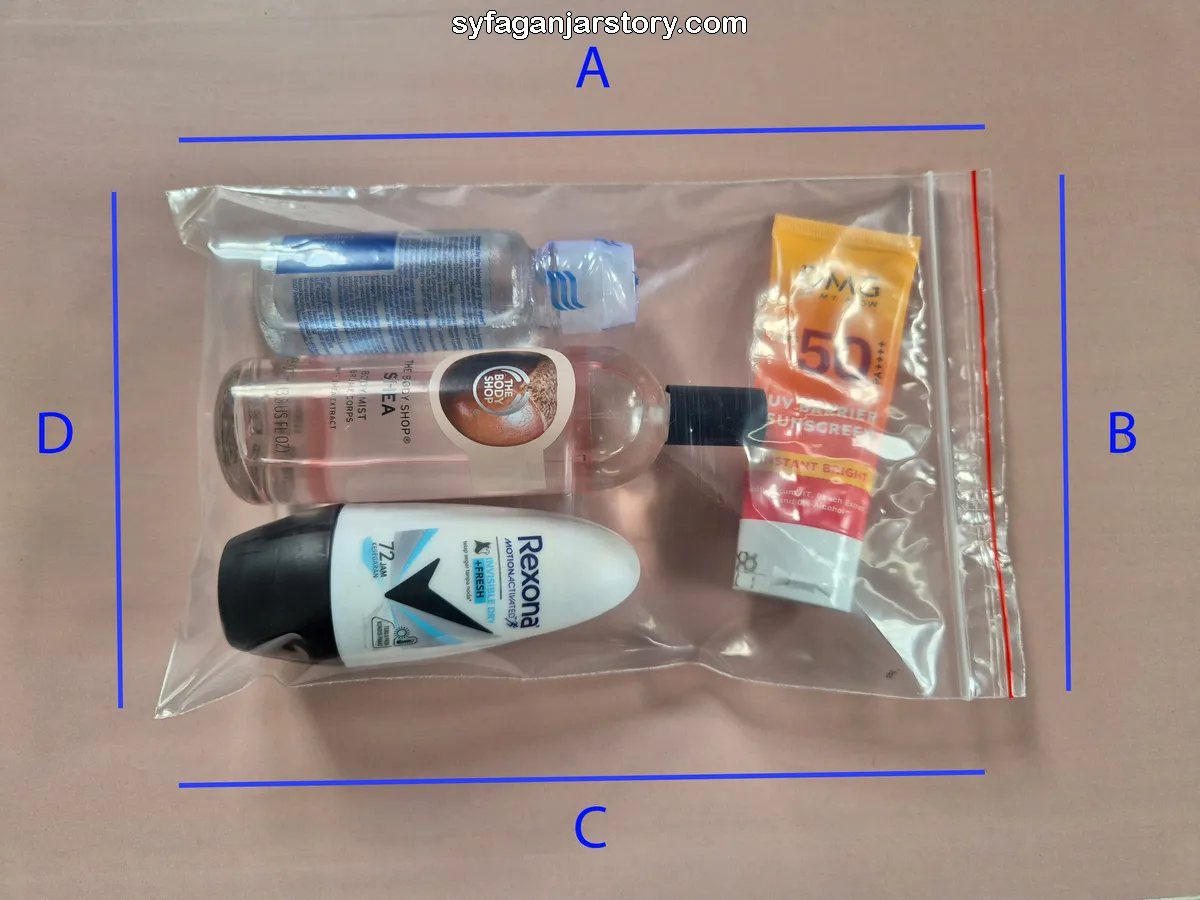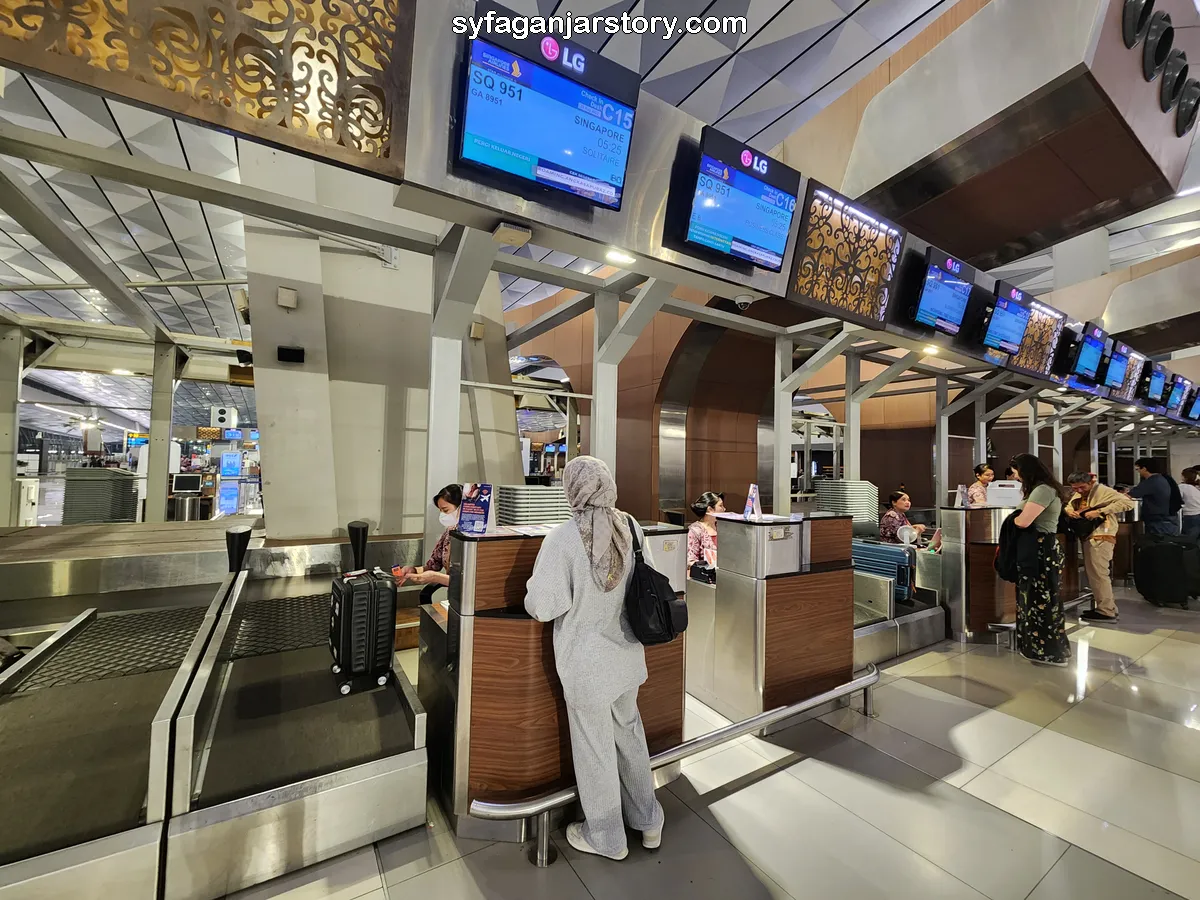When traveling by air, one type of item that has restrictions is liquid. In aviation, these are often called LAGs. This term stands for Liquids, Aerosols, and Gels.
I've seen many travelers who have to throw away these items at security checks. They usually have liquids in bottles bigger than what the airport allows.
So, what's the limit for liquids on an airplane? The rules about how much liquid you can bring depend on your luggage type.
It matters whether it's checked baggage or carry-on baggage you take into the plane's cabin. Let's first look at what counts as a LAG item before we dive into the specific rules for these two types of luggage.

As I mentioned earlier, LAG stands for Liquid, Aerosol, and Gel. These are all types of liquids, but they differ in their form and thickness. Let's look at each one:
The term 'liquid' describes things that flow freely, like water, at room temperature. Common items in this category include water, alcoholic drinks, liquid deodorant, vape juice, perfume, cologne, sunscreen, lotion, shampoo, liquid soap, hand sanitizer, soy sauce, and other sauces.
Aerosols are liquids in special containers under pressure. When you spray them, they come out like a gas. Examples of aerosols include perfume, hairspray, pepper spray, shaving cream, and more.
Gel is a type of liquid that's thicker than water. Things like toothpaste, jam, yogurt, honey, fish oil, hair styling gel, and cheese spreads are examples of gels.

Now that we understand what LAGs are, let's talk about their restrictions when you bring them in your cabin luggage.
When you're taking liquids in the cabin, each container should be no larger than 100ml (3.4 ounces). Even if the amount of liquid is less than 100ml, you can't bring a container that's larger than 100ml into the cabin.
You're allowed a total of 1 litre of liquids in the cabin. For example, if all your containers are 100ml, you can only have 10 of them. You can bring more containers if they are smaller.
Additionally, all your liquid containers need to be in a clear and resealable bag. The total size of this bag should not be more than 80 cm, which is about 20 x 20 cm or 15 x 25 cm.

To figure out the total size of the bag, you can use the picture above as a reference. Each side of the bag is marked with letters A, B, C, and D. Add up the lengths of these four sides to get the total size, A+B+C+D.
Place this bag at the front of your luggage or near the zipper. This makes it easy to take out during the security check.
There are exceptions for prescription medicines or special food like baby food. You can take more than 100ml of these items if you tell the airline staff before your flight.
What About Liquids Bought at Duty-Free Shops?
We often shop in duty-free areas before boarding a plane. Duty-free shops are usually located in the airport's secure area and sell a range of products like food, drinks, cosmetics, and medicines.

If you buy a liquid product in duty-free that's over 100ml, most airports let you carry it with you. However, some airports require this item to be placed in a special bag called a Security Tamper-Evident Bag (STEB).
You also need STEB packaging if you buy something in duty-free and then have to take another flight before reaching your final destination. Most duty-free shops provide this packaging. Just ask for it if you need it.
Make sure the STEB packaging stays closed and don't open it until you reach your final airport. Keep your duty-free receipts too, as security might check them.
Remember, rules for duty-free items can vary from one airport to another. It's a good idea to ask airport staff about the rules before buying liquid items in duty-free shops.

When it comes to putting liquids in checked baggage, the rules are more relaxed than for cabin baggage. You're allowed to pack liquids in containers larger than 100ml in your checked luggage.
These liquids don't need to be in clear packaging. Still, I suggest wrapping them securely in a thick, sealed bag. This is to prevent any leaks from spilling all over your things.
It's important to know that there's a limit on the total amount of liquids you can pack in checked baggage. This limit changes from country to country. So, it's a good idea to check the rules of the country you're traveling to beforehand.
These are the guidelines for liquid limits we need to follow when flying. In some places, these rules only apply to international flights and not domestic ones.
But in other countries, they're used for domestic flights too. To be safe, I recommend following these rules no matter what kind of flight you're on.
